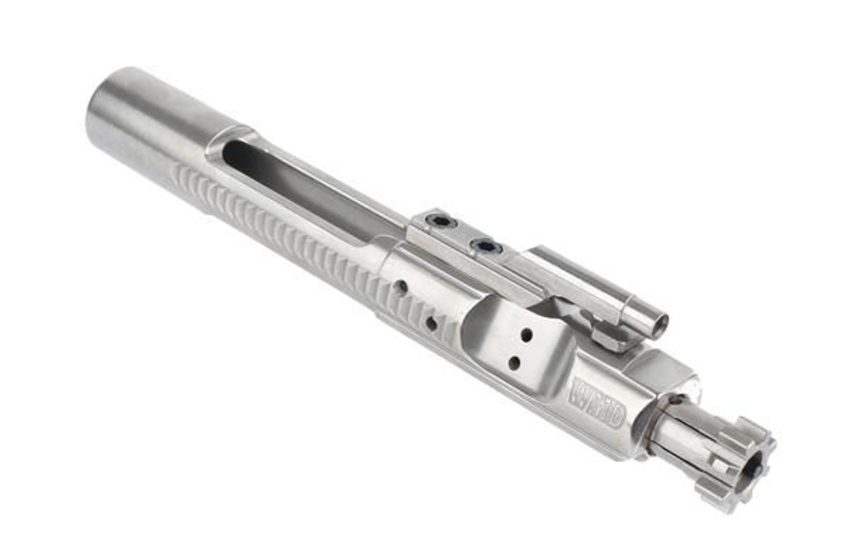How Does the Bolt Carrier Operate and What Are Its Key Components?

When exploring affordable gun accessories, understanding the inner workings of firearm components can greatly inform your choices. One crucial part of any semi-automatic or automatic firearm is the bolt carrier. This component is essential for the cycling of ammunition and the overall operation of the gun. Let’s delve into how the bolt carrier functions and the key components involved.
What is a Bolt Carrier?
The bolt carrier is a key part of a firearm’s operating system. It is responsible for the movement of the bolt, which is central to the loading, firing, and ejection of cartridges. The bolt carrier assembly works in concert with other components to ensure that the firearm cycles smoothly and reliably.
Main Functions of the Bolt Carrier
-
Chambering a Round
- The bolt carrier moves the bolt into the chamber to load a round from the magazine. This action ensures that each shot is properly prepared for firing.
-
Firing the Round
- Upon pulling the trigger, the bolt carrier moves forward and strikes the primer of the cartridge, igniting the propellant and firing the round.
-
Ejecting the Spent Cartridge
- After firing, the bolt carrier moves back, extracting and ejecting the spent cartridge case from the chamber. This clears the way for the next round to be chambered.
-
Recycling the Action
- The movement of the bolt carrier is crucial for the reloading cycle of the firearm. It helps reset the firing mechanism for the next shot.
Key Components of the Bolt Carrier
Understanding the components of the bolt carrier helps in maintaining and optimizing your firearm. Here are the main parts:
Bolt Carrier Group (BCG)
-
Bolt Carrier
- The bolt carrier is the main body that houses the bolt and other internal parts. It moves back and forth within the upper receiver, facilitating the loading, firing, and ejection processes.
-
Bolt
- Attached to the bolt carrier, the bolt locks into the chamber and houses the firing pin. It is responsible for holding the cartridge in place and firing it when the firing pin strikes the primer.
-
Firing Pin
- The firing pin is a small rod that strikes the primer of the cartridge. It is housed within the bolt and is pushed forward when the trigger is pulled.
-
Cam Pin
- The cam pin rotates the bolt during the cycling process. It ensures that the bolt locks and unlocks properly during each shot.
-
Extractor
- The extractor is a hook-like component that grabs the rim of the cartridge case and pulls it out of the chamber after firing.
-
Ejector
- The ejector helps in pushing the spent cartridge case out of the ejection port. It works in tandem with the extractor to clear the chamber.
-
Gas Key
- Attached to the bolt carrier, the gas key directs the gas from the fired round to push the bolt carrier back. This gas operation is crucial for semi-automatic and automatic firearms.
How the Bolt Carrier Operates
The operation of the bolt carrier can be broken down into several steps:
1. Loading the Round
- When the firearm is cycled, the bolt carrier moves forward, pushing the bolt into the chamber and loading a new round from the magazine.
2. Firing the Round
- Pulling the trigger releases the firing pin, which strikes the primer of the cartridge. The bolt carrier, with the bolt locked into place, ensures the round fires effectively.
3. Extracting the Spent Case
- After firing, the bolt carrier moves back due to the gas pressure or recoil force. The extractor pulls the spent cartridge case out of the chamber.
4. Ejecting the Spent Case
- The ejector pushes the spent case out of the ejection port, clearing the chamber for the next round. The bolt carrier returns to its forward position to repeat the cycle.
Maintenance and Care
Regular maintenance of the bolt carrier is essential for reliable firearm operation. Here are some tips:
-
Regular Cleaning: Keep the bolt carrier clean to prevent malfunctions caused by dirt and debris. Regular cleaning also helps in prolonging the lifespan of the component.
-
Proper Lubrication: Apply appropriate lubrication to ensure smooth movement of the bolt carrier and prevent excessive wear on the internal parts.
-
Inspection for Wear: Check for any signs of wear or damage, such as cracks or deformation, which could affect the functionality of the bolt carrier.
Conclusion
The bolt carrier is a vital component in the operation of semi-automatic and automatic firearms. By understanding its function and key components, you can better appreciate how your firearm cycles and performs. Regular maintenance of the bolt carrier ensures smooth operation and reliability, making it an essential part of firearm upkeep. Whether you are investing in affordable gun accessories or looking to optimize your current setup, knowing the role and care of the bolt carrier helps in making informed decisions about your firearm.

